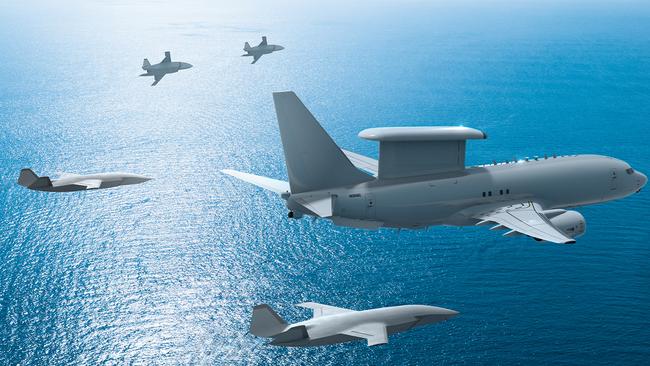Ghost Bats expand uncrewed capabilities
The Royal Australian Air Force is set to acquire an additional seven MQ-28A Ghost Bat uncrewed autonomous aircraft from Boeing under a new $454m deal.

The Royal Australian Air Force is set to acquire an additional seven MQ-28A Ghost Bat uncrewed autonomous aircraft from Boeing under a $454m deal announced in the final week of the recent election campaign.
The announcement brings the total number of Ghost Bats under contract to 13 and the capability is expected to enter service with the RAAF in the 2024-25 time frame.
Previously known as the Boeing Airpower Teaming System – or more commonly, Loyal Wingman – the platform was officially designated MQ-28A Ghost Bat during a ceremony at RAAF Base Amberley in Queensland in March.
Speaking at the naming ceremony, Head of Air Force Capability Air Vice-Marshal Robert Denney said the introduction of the MQ-28A into service in coming years will mark a “turning point” in air combat capability.
“No other nation has developed a teaming air capability, but with this aircraft we are well on our way to producing one – an operational system that can deliver a unique capability for our Defence Force,” Denney said.
“It started with the generic title of loyal wingman, but it doesn’t have to be a wingman: it can operate without crewed platforms in proximity, opening up new areas beyond their reach. Unlike a conventional aircraft, which gives away its role by what it carries under its wings, there’s a little bit of secret in this aircraft.”
The uncrewed MQ-28A benefits from artificial intelligence and is designed to operate autonomously or semi-autonomously with the Royal Australian Air Force’s crewed platforms to perform combat and/or surveillance operations.
The idea behind the relatively cheap Loyal Wingman concept is to redress the numerical disadvantage the RAAF would find itself in during conflict with larger forces in the region by acting as a force multiplier.
Developed by Boeing in Australia in partnership with Defence, the MQ-28A is claimed to have “fighter like” performance, enabling it to operate alongside RAAF F-35A Lightning II and F/A-18F Super Hornets, EA-18G Growler airborne electronic attack aircraft and E-7A Wedgetail airborne early warning and control platforms.
Defence wants the aircraft to perform a number of roles, including air combat, electronic warfare and intelligence, surveillance and reconnaissance. A variety of payloads will be carried in the MQ-28A’s reconfigurable nose and a number of sensors are now in the ground test phase.
Defence has declined to provide details of what the specific payloads will be, however one of two MQ-28As currently flying was displayed publicly for the first time at Amberley with what appeared to be an infra-red search and track system installed.
Prior to the latest announcement, Canberra had already invested around $155m in the program and last year Boeing announced it will establish a dedicated Ghost Bat production facility at Wellcamp Airport near Toowoomba, to become operational at the end of 2024.
At the Indo Pacific maritime exhibition in Sydney in early May, Boeing Defence Australia’s managing director Scott Carpendale said he has “a level of comfort” that commonwealth funding for the program will continue as development work continues.
“There are parallel phases happening,” Carpendale said. “The test program will continue at the same time we are getting ready to move to production programs – so we expect to see continued phase funding from Defence over the next two years.
“The test program will continue in various forms as we continue to evolve the platform and mission sets and particularly the teaming behaviours as the program moves into that phase. So, there will be continued Defence funding over the next few years as we mature that test program.”
Boeing is also seeking export orders for the MQ-28A and has received significant interest from some of Australia’s “Five Eyes” partners, including the US.
This is potentially good news for local industry, as around 70 per cent of the MQ-28A is manufactured in Australia.
“We’re spending a lot of time with our small to medium suppliers who have a key role in the program, to make sure they are able to move to the scale of production we need them to move to,” Carpendale explained.
“We’re looking at things like the recently announced Modern Manufacturing Initiative grant scheme, where we’re able to create opportunities for small businesses to get significant investment in production equipment that will allow them to change the scale of their organisation.
“That’s a real focus for us over the next couple of years – getting them to a point where they aren’t supporting a low-rate production program, they’re supporting a full-rate production program.”


